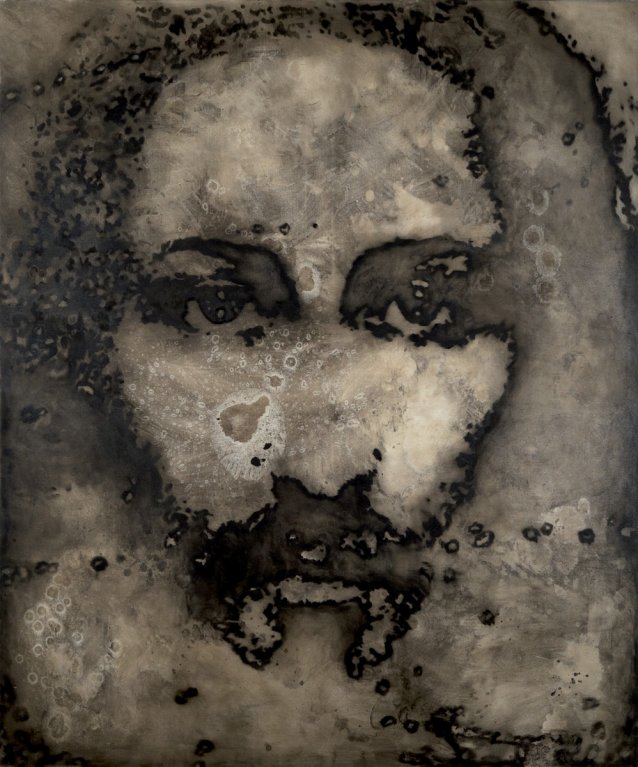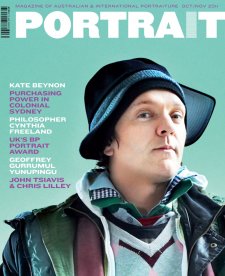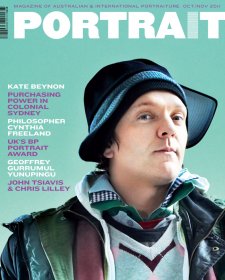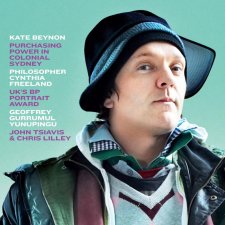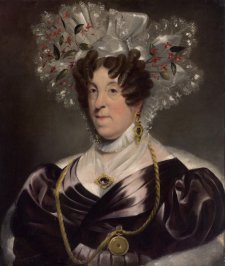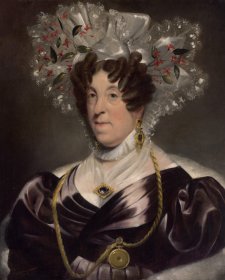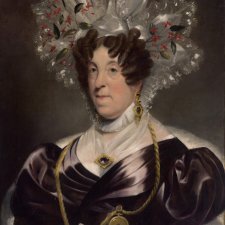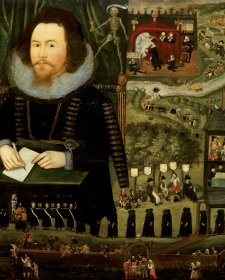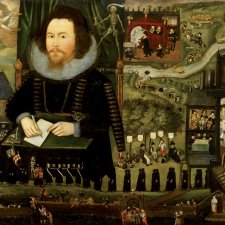Maestri found the performance unforgettable and recalled that, ‘word had been going around all day and the rumours were true – people really were moved to tears’.
Immediately recognising Gurrumul's potential as a portrait subject, Maestri contacted a friend in the music industry who helped track him down in Darwin. As the musician was set to fly to New York the following weekend Maestri seized a forty-minute window of opportunity to meet him at Sydney airport. Against the background of the bustling airport Maestri studied Gurrumul intently, taking several sketches and a photograph. The artist said of the meeting, ‘I got a sense of his presence and this determined the nature of the portrait: quiet and strong’. In light of this, he built up the image quietly and slowly with many glazes to capture the ‘beautiful quality of his skin’. Maestri worked on the painting for over a month while listening to Gurrumul's music and identifying himself with the lyrics and meaning of each song. He admitted that ‘the whole process became quite an emotional experience’.
The result is a large and arresting monotone portrait of a man who has become something of a cultural phenomenon over the past year. In creating this work Maestri steered away from his usual artistic practice, which is typically centred on the natural environment. Having been rejected eight times in the past, he was awarded the Archibald Prize in 2009 for this portrait.
Gurrumul was born blind and lives a traditional lifestyle on Elcho Island in Arnhem Land. Belonging to the Gumatj clan of north east Arnhem Land, it is their songs and stories that Gurrumul performs in his native Yolngu language and adapts into contemporary song styles. At the age of fifteen he was recognised as a talented multiinstrumentalist and joined the band Yothu Yindi, with whom he played an integral role until 1992. He is currently a member of the Saltwater Band. In addition to these contributions to the Indigenous music industry, his solo work has gained the attention of the mainstream music scene. Gurrumul was recently awarded two Australian Recording Industry Association awards and named 2009 NT Australian of the year. His most recent album Rrakala debuted at number three on the ARIA chart and continues to maintain a position in the Australian Independent Records Label Association chart's top twenty.

